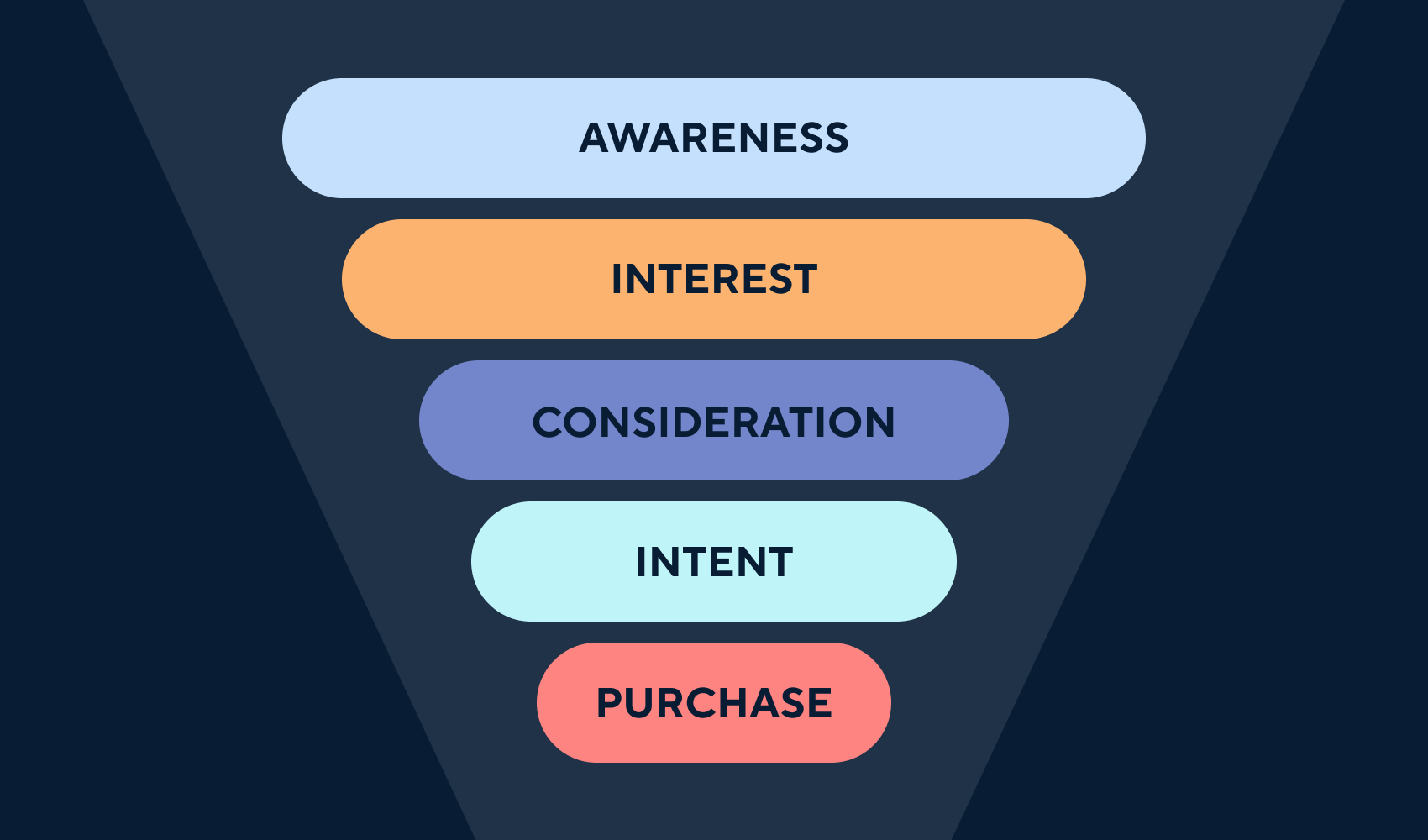What is a marketing funnel?
A marketing funnel is a model that visualizes the path customers take from becoming aware of a product or service to purchasing it.
In short, it shows the process for turning leads into customers from a marketing perspective. Generally speaking, marketing funnels are built around five key stages in the customer buying process:
- Awareness
- Interest
- Consideration
- Intent
- Purchase

Some funnels take this one step further, to account for customer loyalty and advocacy post-purchase.
“From social media and SEO to paid ads and email campaigns, the marketing funnel provides an easy visual of the complex efforts your teams engage in to convert customers”
Marketing funnels are useful roadmaps that companies can use to drive their marketing efforts. Depending on the company and their approaches, these roadmaps may account for marketing efforts across organic, paid, and earned channels. From social media and SEO to paid ads and email campaigns, the marketing funnel provides an easy visual of the complex efforts your teams engage in to convert customers.
What does the “funnel” mean in marketing?
Picture a funnel you may use to pour liquids from one source to another. It’s broader at the top and narrows toward the bottom. Similarly, the marketing funnel has broader efforts at the top, where marketing is aimed at a wider audience (also known as Top of Funnel, or ToFu), and then narrows to a smaller section during Middle of Funnel efforts (MoFu) and finally focuses on serious buyers at the Bottom of Funnel (BoFu).
“Marketing funnels show a linear path to purchase – but remember, people don’t always work in logical, linear ways”
- ToFu: Awareness and interest. At this stage, your goal should be to reach people and raise awareness about your products, services, and brand. Your marketing may be more focused on social media, blog articles, newsletters, and widely shareable assets such as infographics, podcasts, or videos.
- MoFu: Consideration/desire. At this stage, potential customers know about your brand and may be interested in your products, but are making a decision on whether or not to complete a purchase. They may need more direct messaging on specific features and benefits surrounding your products. Here, you’ll want to further educate customers with educational resources, gated assets, webinars, drip email campaigns, and other more pointed communications.
- BoFu: Intent and purchase. At this stage, your prospective customers have intent to purchase and just need to make their final decision. Your marketing efforts here are speaking to a much more narrow audience, and likely dig into examples that are relevant to your soon-to-be-customer’s industry and use cases. This is your chance to prove you can meet your customers’ needs through consultations, case studies, demos, customer testimonials and reviews, or even free trials.
Marketing funnels show a linear path to purchase – but remember, people don’t always work in logical, linear ways.
Some of your leads may first encounter your brand through your MoFu or BoFu marketing efforts, and any customer may take a circuitous route to decide to finally purchase your product. You should ensure no matter where in the stage you’re focusing your efforts, that you include clear CTAs and links to purchase, so that you can capture any intent no matter where your prospective customers encounter your brand.







